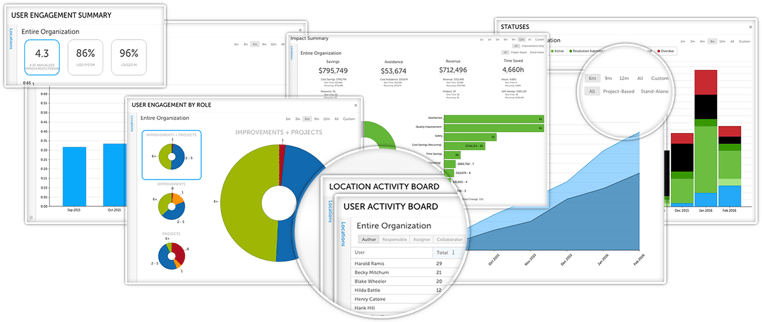 Recently there has been a considerable increase in the number and types of businesses that are applying quality improvement techniques first developed in manufacturing. These days hospitals, construction firms, universities, software development companies, and many more are turning to the tools that make manufacturing excellence possible.
Recently there has been a considerable increase in the number and types of businesses that are applying quality improvement techniques first developed in manufacturing. These days hospitals, construction firms, universities, software development companies, and many more are turning to the tools that make manufacturing excellence possible.
Why not? All types of organizations are a series of processes designed to deliver value to the customer.
One of those techniques is called Standard work. This post will describe the tool, offer some reasons to consider software for managing it, and identify some features you won’t want to go without.
What is Standard Work?
Standard work is the current best practice for performing any process or operation within the process. It is essential because only when a process is performed consistently, no matter who is operating it, can you measure results. The Standard is never the last word; rather, it is the baseline from which future improvements can be made.
There are a few essential requirements for Standard work. It must be:
- Developed by the people who operate the process
- Documented
- Accessible in the place where work is done
- Up to date
Critical Features of Standard Work Software
You can undoubtedly implement and manage Standard work without the help of software. Still, because it is such a vital element of quality management, it pays to invest in tools to support it.
Each feature is an argument for implementation.
Opportunity Capture and Management
Your organization has a lot of processes, probably more than you even realize. Implementing Standard work is a big task, and it will take a while to collect all of the processes and begin documenting the current procedures. Standard work software helps by becoming the unified collection point for every project. Employees can enter each process as an opportunity and start a systematic process of creating the Standards.
Asset Access and Storage
We mentioned that one of the most important elements of Standard work is that it should be accessible in the place where work is done. If you chose a cloud-based solution, the Standard, all relevant assets such as manuals or images, and any current work in progress information is all available from anywhere on any device. This is particularly important if you have remote or traveling employees.
Change Management Workflow
Whether you are in the process of first developing the Standard for a given process, or are working to improve it, it is essential to have workflow tools that provide notifications and alerts to the right people when tasks are due. This way, you can practice controlled change and be sure that forward momentum doesn’t stall.
Search
Not every process in your organization is likely unique. While each will have some variation, there is probably some cross-over and things the people can learn from the Standards developed by others.
Using Standard work software makes it easy for users to search for similar processes and build on the best practices they find. It may also help people flag ideas that don’t work to avoid repeated dead ends.
Reporting
The best Standard work software solutions have visual management tools that make it easy for leaders to see the progress of their Standard work implementation and future improvement work. At any given time, you’ll know how many projects are underway, which functional areas are working on them, and which people are actively engaged in the effort.

Additional Best Practices for Standard Work
We mentioned the critical requirement that the operators of the process develop the Standard. Here are a few more best practices.
Changes to the Standard Require Structured Improvement
Changing the Standard isn’t a bad thing. In fact, that’s the idea, to always be improving it. However, changes should only be made in a thoughtful controlled manner. We recommend the PDSA improvement cycle for most changes.
Managers Observe the Standard in Practice
It is one thing to see the Standard written out, but quite another to see it in action. Regularly, supervisors must go to the place where work is done to observe that the Standard is being applied and that it is effective. This is an opportunity to show respect and ask questions of process operators.
Standards Receive Regular Review
Even if a process is performing well, it is necessary to review the Standard from time to time with an eye for innovation. The cadence of this review depends on the type of process and organization, but there should be a cadence.
Standard work is one of the bedrocks of quality improvement. Implementing a platform to support it just makes sense. Your employees and your customers will be glad you did.



Add a Comment